Pärnu New Art Museum 19 Jan 2019 – 24 Feb 2019
EXHIBITION “EXILE LANDSCAPES”
Mireya Masó, Marta Marcé (Catalonia) and Urmo Raus (Estonia)
Pärnu New Art Museum 19 Jan 2019 – 24 Feb 2019
Due to their political opposition after the Russian Revolution of 1905, Estonian artists exiled themselves to Åland and Norway, and were fascinated by the beauty of Scandinavian landscapes.
These exotic landscapes freed them from their academic ties and brought a modern era into Estonian art. Konrad Mägi's Norwegian landscapes hold the same weight and importance in Estonian art as do Cézanne’s landscapes in French art.
Perhaps the most symbolic “landscape in exile” in Estonian art history is “Lying Tiger” by Eduard Wiiralt which was engraved in the Paris zoological park in 1937 and depicts an exotic tiger amidst nordic birch trees. The graphic artwork in which the prison cell of a zoo has been replaced with birches of the artist’s homeland reflects the controversy of freedom, imprisonment and life in exile.
The exhibition “Exile Landscapes” includes the experience of exile and landscapes of three different artist who reside in Barcelona, Hague and Berlin. The landscapes are depicted in varied levels of abstraction. Some are more realistic, some entirely abstract.
Mireya Masó lived in Antarctica for one year with a group of scientists. Her films reflect on the experience of living on the symbolic edge of the world.
The artwork of Catalonian born, Berlin-based artist Marta Marcé, who studied in London, can be described as playful, emotional and in search of a certain pure creativity.
One of Marcé's work series displayed in Pärnu, entitled “Tabula Rasa”, is inspired by the music of Estonian composer Arvo Pärt who also spent many years exiled in Berlin. This particular series of paintings, accomplished in 2018, is perhaps one the most meditative among Marcé's work.
The paintings of Urmo Raus, inspired by culturally significant landscapes, are contemplations on landscapes that have served both as a refuge and source of inspiration. Mont-Sainte Victoire, the dunes of Hague and Estonian bog islands are all part of the series of paintings created in 2017-2018.
Urmo Raus also acts as a link between the three artists: besides being influenced by the art world hotspot, living in Paris gave him inspiration in the sense of colour and material of the Catalan artists.
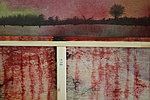

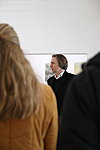

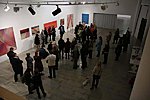
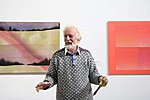
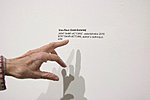
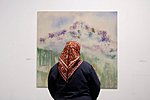

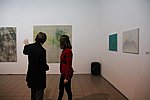
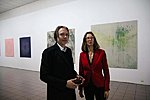
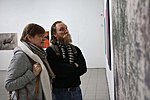
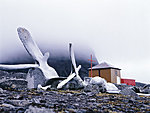

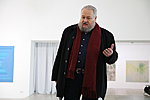
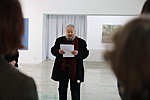

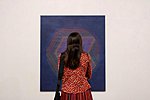


Write first comment